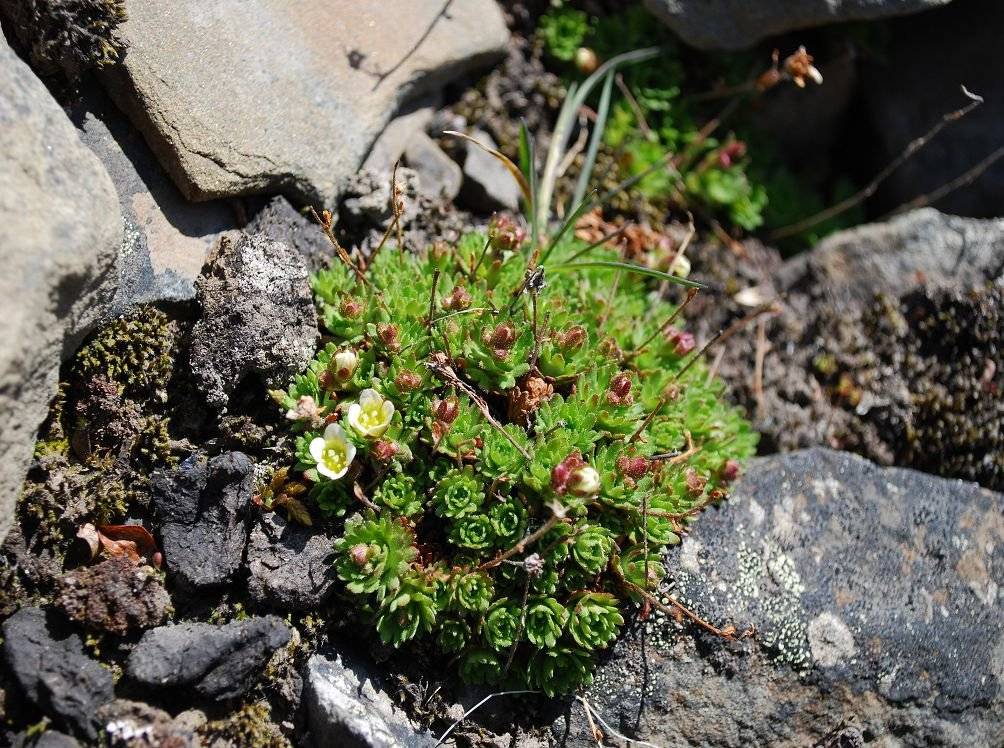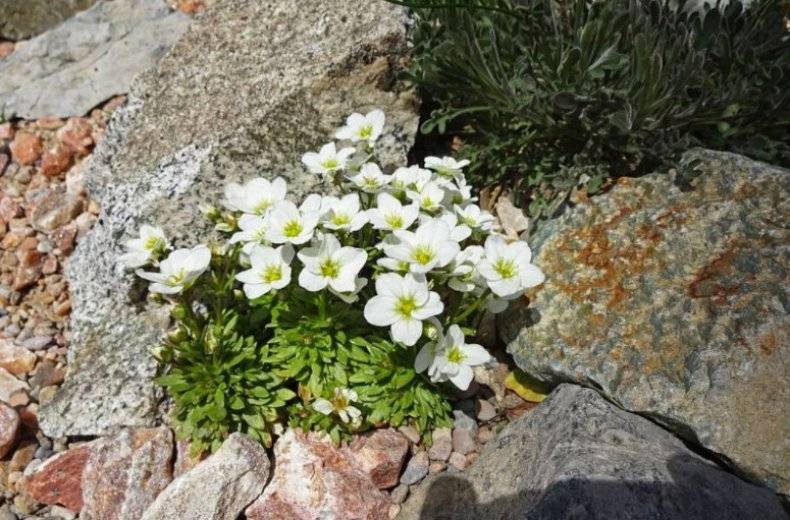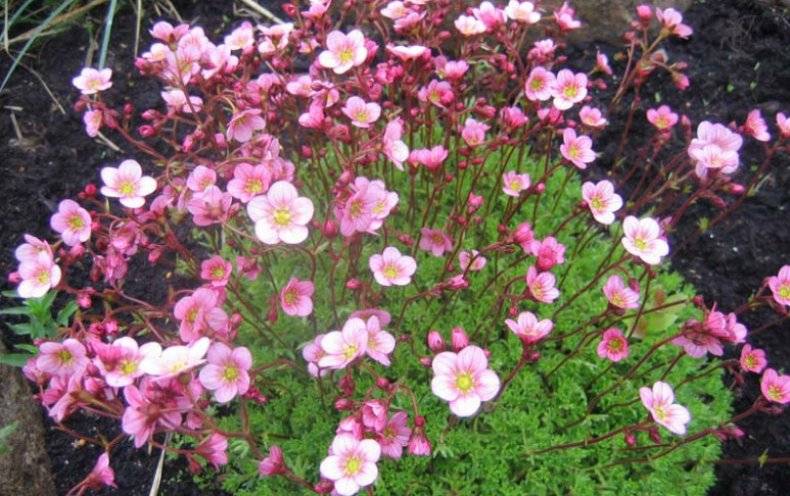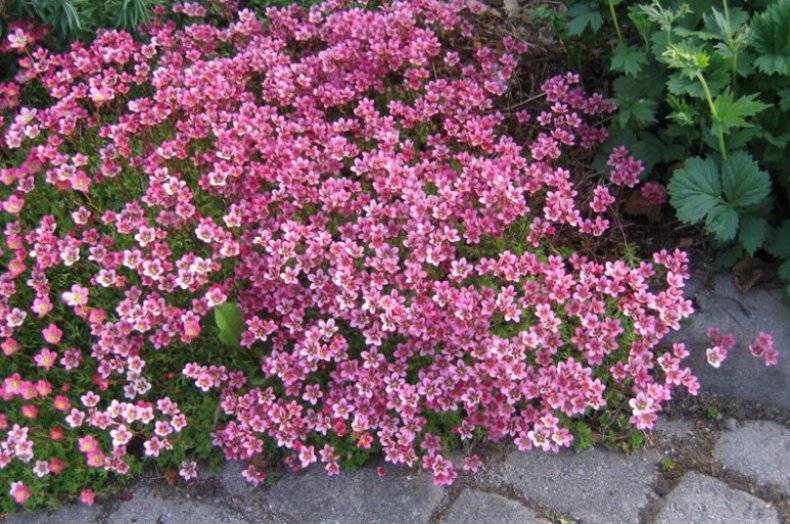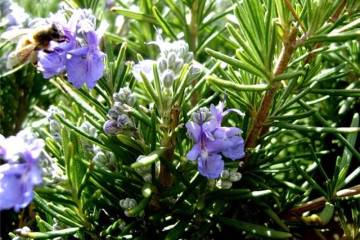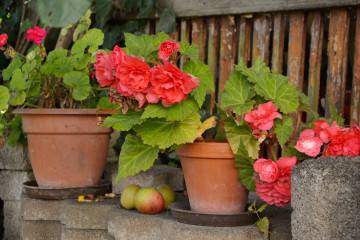Arends' saxifrage - home care and cultivation
Content:
Arends's saxifrage is loved by many gardeners around the world, and this is not surprising when you consider all its qualities. The plant is a wonderful perennial ground cover, moreover, it blooms very brightly and for a long time. And the unpretentiousness of the saxifrage to growing conditions is simply amazing: it grows well even in such unsuitable places for this, where other plants simply will not survive.
Appearance and features of saxifrage
The plant got its unusual name due to its simply amazing ability to destroy stones by its roots. The usual habitats of saxifrage are rocky mountain slopes, their foot, and rocky embankments. It takes root in the smallest cracks and gaps between stones and gradually, with its root system, produces a destructive effect on them.
Given such abilities, it is not surprising that the saxifrage is often called the "tear-grass" among the people. In gardens and on plots, saxifrage is in demand not only as a bright ground cover, but also as a plant that can perfectly decorate an alpine hill, or as an excellent option to ennoble poor and stony soil.
Arends' saxifrage has long and branched roots, thanks to which it can survive in such unfavorable conditions. The height of the plant, depending on the variety, and there are more than 400 of them, varies from 5-7 cm to 60-70 cm. Long stems of saxifrage spread. Their characteristic feature, thanks to which the plant is able to fill a significant space in a short period of time, is the ability to form roots in internodes as soon as the shoot begins to come into contact with the ground.
The leaves of the plant represent a basal rosette and are very different in shape and color: from dark green to bluish and bluish, while they can be smooth or pubescent. In Arends' saxifrage, they are small, openwork, divided into strips.
Features of caring for a flower at home
Saxifrage can be perfectly grown as a home plant. One has only to follow some simple rules, and the plant will thank you with juicy greens and bright flowering.
- Temperature. During the active growing season, the saxifrage needs warmth. The temperature regime from 20 ° C to 25 ° C will suit her perfectly. If in the summer it becomes much warmer in the house, it is advisable to take the plant out into the fresh air: into the garden, onto the balcony. If this is not possible, then you will have to ventilate the room more often.
- Lighting. Both abundant lighting and partial shade are suitable for the plant. One has only to beware of prolonged exposure to direct sunlight, as the foliage will become lethargic and pale.
- Watering. Plant care includes mandatory watering, which is carried out with soft, settled water, while it should be at room temperature. Watering is carried out as the upper layer of the substrate dries up, but at the same time in no case do they allow the formation of stagnant water in the substrate, this often leads to the appearance of rot.
- Spraying.In general, the plant under natural conditions tolerates drought well enough and is not particularly demanding on air humidity. But when grown at home, the saxifrage still needs to be irrigated, this is especially true in summer in the heat and in winter, if the plant is in a heated room.
- If in winter it is not possible to provide the plant with a stay in a room with a low temperature, then it must be removed away from heating devices and periodically irrigated with warm water.
- Priming. Anders' saxifrage does not need a particularly nutritious soil, it will be quite satisfied with an average or even weak level, but the soil should pass air and water well, therefore, when planting, you must remember about the need for a drainage layer, which will not allow water to stagnate in the roots.
- Top dressing. Saxifrage should be fertilized no more than once a season, while you should not be zealous with nitrogen fertilizers, from this the plant will begin to actively increase the green mass, which will negatively affect its flowering.
Flowering saxifrage
In late spring - early summer, saxifrage blooms. Its flowers are small, with five petals, stellate, they tolerate a drop in temperature quite well. Due to the abundant flowering and the ability to grow rapidly during this period, the saxifrage is a pink carpet that completely covers the ground (the color can also be white or purple, depending on the variety).
The most common varieties of Arends' saxifrage are:
- Saxifrage Purpurmantel (Purple Carpet). This plant is short (up to 15 cm) with bright purple-pink flowers that abundantly cover the ground like a carpet. Well tolerates cold, prefers moist and well-drained soil;
- Flamingo (saxifrage Pink carpet). Leaves are dense, dark green in color. The variety blooms profusely in a pale pink color;
- saxifrage Red Cap. The leaves are bright green, the flowers are small, abundant, pink-ruby color. Grows well in the sun and in partial shade, but very poorly tolerates excess moisture;
- saxifrage Alpino Rose blooms with bell-shaped flowers of pink and purple-red shades. The variety is evergreen, it needs regular watering and good lighting.
Pruning
You do not need to prune the plant. The only thing it needs is to periodically break off dried inflorescences. Thus, the plant will retain its decorative effect longer.
How Arends's saxifrage reproduces
There are several methods to propagate this bright ground cover.
- Reproduction by seeds. Even a novice gardener will master both caring for Arends' saxifrage and growing it from seeds. Before planting, seeds mixed with sand (each seed is very miniature in size), it is advisable to stratify - put in a refrigerator for a couple of weeks. Then they need to be sown into the prepared substrate, without deepening. Seedlings dive into separate containers, after several leaves appear on it. It will be possible to plant young plants in open ground at the beginning of summer, but they will bloom only next year.
- With the help of cuttings. Cuttings are cut from young healthy shoots and rooted either in water or in a peat-sandy substrate. But young plants are grown indoors all winter and only closer to the next summer are they planted in open soil.
- Air layering. Aerial roots are often formed in the axils of the leaves in the absence of contact between the shoot and the ground. In spring, such shoots can be cut off and planted in the soil as an independent plant.
Plant transplant
Frequent transfers will not be required. If we are talking about a room saxifrage, then transplant it when the roots are already completely entwined with a clod of earth and begin to appear through the drainage holes. And street varieties are transplanted every few years if the old shoots have already lost their decorative effect and you just need to update the plant.
Possible growing problems
In growing a flower, many may face the following problems:
- the plant sheds buds and leaves. This usually happens with a sharp change in temperature, as well as air humidity;
- leaves turn pale. This means that the saxifrage is exposed to too bright sunlight, so it is better to shade it a little;
- the tips of the leaves dry. The reason is too low air humidity. If you want to grow a healthy plant, you will have to spray it more often;
- the lower leaves usually fall off in aged plants. This is a sign that it is time to rejuvenate them;
- pests. Sometimes on the saxifrage, worms, spider mites or aphids can settle. When they appear, the plant is treated with insecticides or soapy water;
- disease. With excessive watering and stagnant moisture, the plant can be affected by powdery mildew, rust, and mold. Parts of the plant affected by diseases are removed, and the plant itself should be treated with copper sulfate or fungicides.
Thus, it is not so difficult to care for Arends' saxifrage, since it is unpretentious to growing conditions. So, with a minimum of care for the saxifrage, you can get a flower carpet on the site, which will delight almost all summer.
